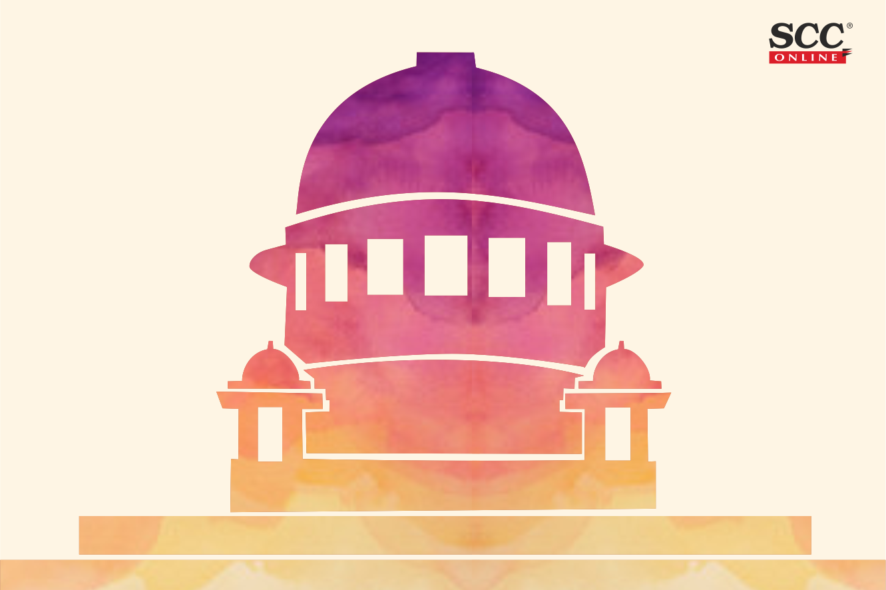Supreme Court of India: The Division Bench of Navin Sinha and R. Subhash Reddy, JJ., reiterated the value of ocular evidence while reversing the acquittal of the accused.
Instant appeal arose from an acquittal order reversing the conviction of respondents 1 to 4 under Sections 302, 34, 120 B of the Penal Code, 1860 sentencing them to life imprisonment and 15 days imprisonment under Section 135(1) of the Bombay Police Act.
The deceased was assaulted while he was returning on a motorcycle with PW-2 who was the pillion rider.
Acquittal was premised on the reasoning that the evidence of the eye-witnesses PW-2 and PW-10 was inconsistent with the medical evidence, regarding the nature of injuries vis-à-vis the weapons of offence.
High Court erred in the appreciation of evidence by failing to take note that the iron rod had a sharp edge by which the injuries on the deceased were possible. It is only if the medical evidence was totally inconsistent with the ocular evidence, the former was to be given precedence.
Analysis, Law and Decision
Bench stated that it was not disputed that PW-2 who was accompanying the deceased on the motorcycle, took him to the hospital.
FIR was lodged barely hours later naming the respondents. There was no time for the witness to consider and ponder for naming the accused except to state the truth.
The respondents were not strangers, but were well known to PW2 and the deceased. PW12 deposed that the respondents had threatened the deceased earlier also and were compelling him to withdraw the case and would also demand money from him because of which the deceased had shifted from the locality where they all they lived earlier.
Court stated that there is evidence about the availability of light near the place of occurrence. Even otherwise, that there may not have been any source of light was hardly considered relevant in view of the fact that the parties were known to each other from earlier.
Bench expressed that, Criminal jurisprudence developed in this country recognizes that the eye sight capacity of those who live in rural areas is far better than compared to the town folks. Identification at night between known persons is acknowledged to be possible by voice, silhouette, shadow, and gait also.
Court relied on Nathuni Yadav v. State of Bihar, (1998) 9 SCC 238 with regard to the identification in the dark.
Supreme Court expressed that it is only in a case where there is a gross contradiction between medical evidence and oral evidence, and the medical evidence makes the ocular testimony improbable and rules out all possibility of ocular evidence being true, the ocular evidence may be disbelieved.
In the present matter, Court found no inconsistency between the ocular and medical evidence.
High Court grossly erred in appreciation of evidence.
Conclusion
The acquittal by the High Court was based on misappreciation of the evidence and the overlooking of relevant evidence thereby arriving at a wrong conclusion.
Further, the Court stated that the present case was not where two views were possible or the credibility of the witnesses was in doubt. Neither was it a case of a solitary uncorroborated witness.
Conclusion of the High Court was therefore held to be perverse and irrational.
Therefore, in the nature of the assault, Section 304 Part II, IPC has no application.
Supreme Court directed respondents 1 to 3 to surrender within 2 weeks and Director General of Police, State of Gujarat shall take all necessary steps to apprehend the absconding, fourth accused and bring him to justice.
In view of the above, appeal was allowed. [Pruthviraj Jayantibhai Vanol v. Dinesh Dayabhai Vala, 2021 SCC OnLine SC 493, decided on 26-07-2021]







